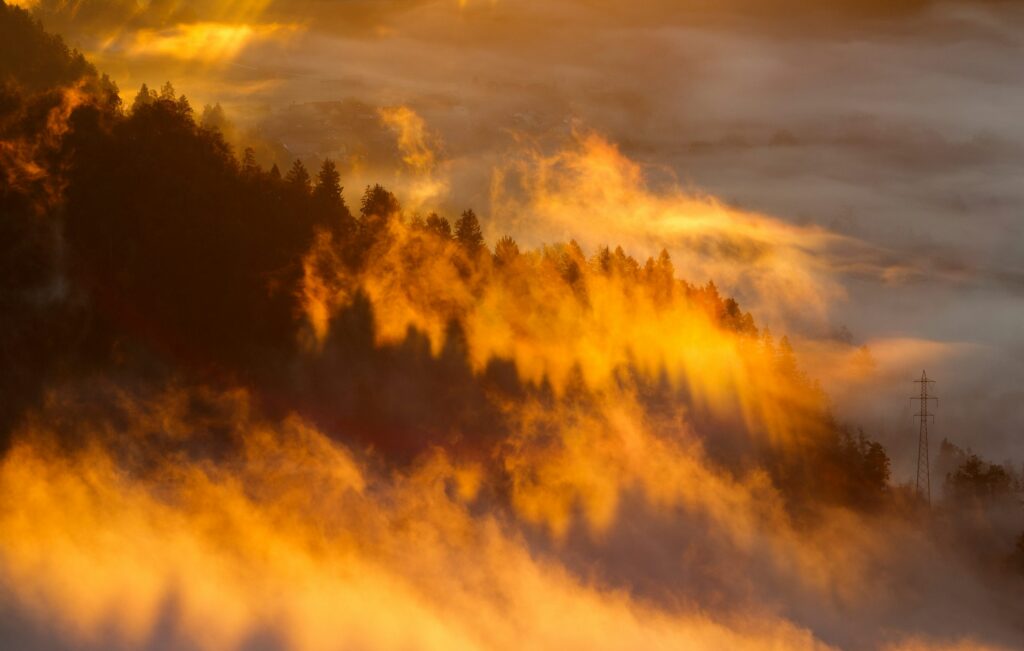... that wildfire is a bigger and deadlier threat than ever before: “today’s fires tend to be larger and more severe... today’s conditions confront us with the likelihood of more rapid, extensive ecological changes beyond any we have experienced in the past.” Sound familiar? As we head towards forest fire season it might remind you of the usual climate ambulance-chasing that follows major forest fires, declaring greenhouse gases make such events bigger and more severe than they used to be. But there are two details we left out. First, the quotation is not recent, it is from a report on US Wildland Fire Management published 20 years ago. Second, we cut out some parts. The threat they were talking about was fuel buildup due to aggressive fire suppression and restrictions on forest clearing, which would create a risk of unprecedented severity of fires. The whole quotation reads “Fire exclusion efforts, combined with other land-use practices, have in many places dramatically altered fire regimes so that today’s fires tend to be larger and more severe. It is no longer a matter of slow accumulation of fuels; today’s conditions confront us with the likelihood of more rapid, extensive ecological changes beyond any we have experienced in the past.” Rather changes the meaning, doesn’t it? Scientists say.
We are grateful to Tony Heller for finding and archiving the 1995 Report and other US wildfire data sources since, as he has noted, the current US Administration is erasing its historical forest fire data. They say it’s because people in the 1930s didn’t know how to count fires accurately, although we suspect their concern is that they counted fires all too accurately and the record shows that 5 times as much land burned in the 1920s and 30s compared to today. As Heller also notes, in the 1930s people split the atom and built the Golden Gate Bridge. They knew how to count wildfires.
They also knew that wildfire is an integral part of land use management, and that aggressive forest fire suppression in the post-war period had created the risk of explosive fires due to fuel buildup. So they recommended the US start reintroducing fires, to avoid future tragedies. As it says on pp. 10-11 of that “Review and Update of the 1995 Federal Wildland Fire Management Policy”:
To address these changes and the challenge they present, we must first understand and accept the role of wildland fire, and adopt land management practices that integrate fire as an essential ecosystem process.
The task before us – reintroducing fire – is both urgent and enormous. Conditions on millions of acres of wildlands increase the probability of large, intense fires beyond any scale yet witnessed. These severe fires will in turn increase the risk to humans, to property, and to the land upon which our social and economic well being is so intimately intertwined.
Agencies must create an organizational climate that supports employees who implement a properly planned program to reintroduce wildland fires.
Unfortunately, as we have noted elsewhere, rather than heeding the advice, US states like California did the opposite, adding rules in 2012 that restricted brush-clearing even further, until in the aftermath of the deadly 2018 Camp Fire in Paradise California they finally reversed course and began allowing landowners to reduce fuel buildup. Which, sadly, was what the 2001 report predicted would happen:
The problem is not finding new solutions to an old problem. It’s implementing known solutions. Deferred decision making is as much a problem as the fires themselves. If history is to serve us in the resolution of the Wildland Urban Interface problem, we must take action on these issues now. To do anything less is to guarantee another review process in the aftermath of future severe fires.


